
The Water Protectors
University researchers study CRITICAL issues that affect the state’s water
In a glass bowl of water in a lab in Science Hall, an animal kingdom fight for survival, in miniature, was underway between a sea nettle jellyfish and a clinging jellyfish, both smaller than a dime but toxic to humans. The milky-white sea nettle was winning, slowly devouring the translucent and toxic clinging jellyfish, whose orange tentacles were reaching desperately to get free.
“I spent a decade trying to wipe out sea nettles, but lo and behold, they have a value, in wiping out clinging jellyfish,” says Biology Professor Paul Bologna, director of the Marine Biology and Coastal Sciences Program.
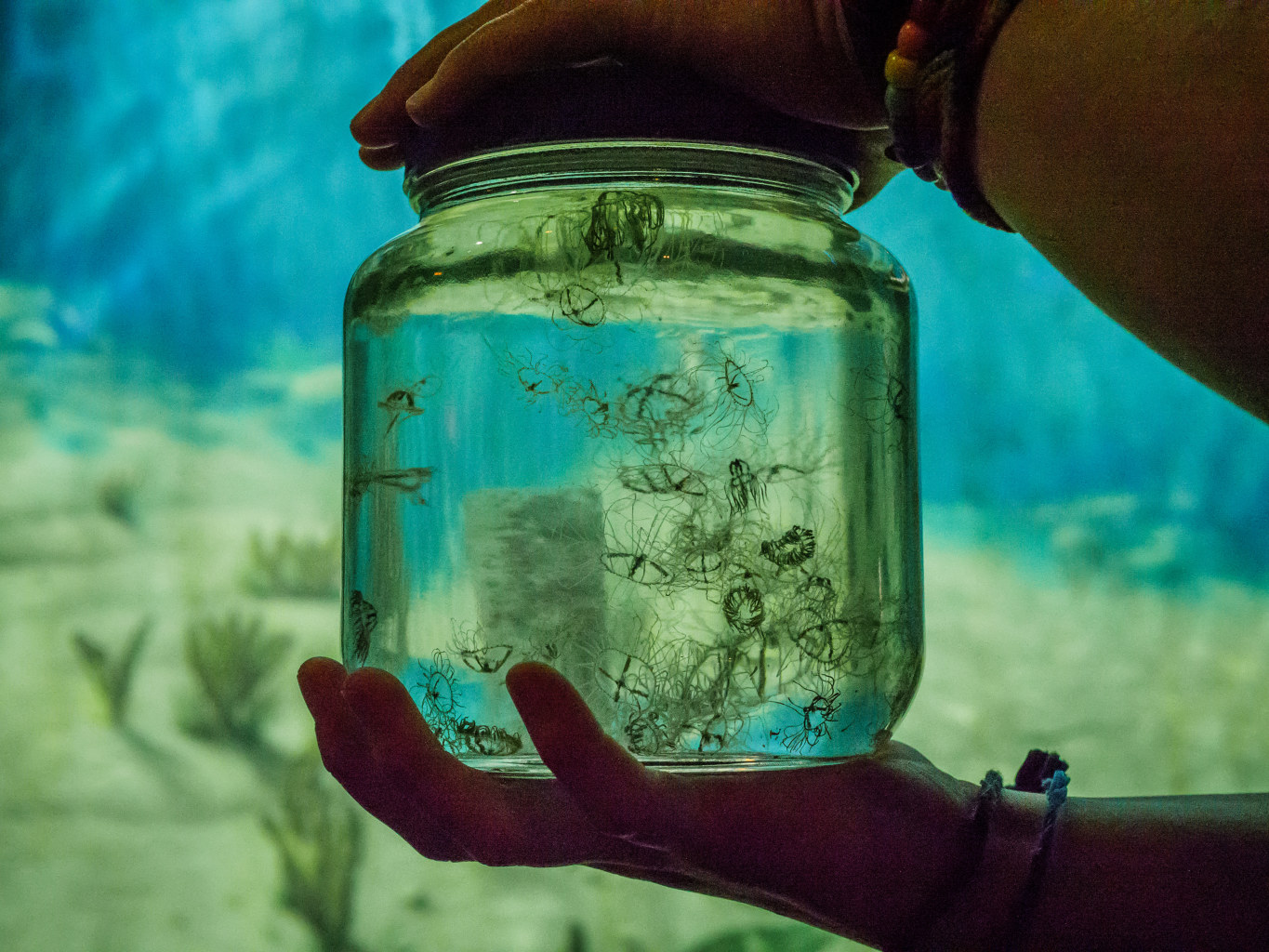
Bologna’s team of students is studying both species of jellyfish, which are threatening the safety of swimmers in Barnegat Bay and elsewhere in New Jersey.
The team of University researchers is just one of several that are studying issues that affect New Jersey’s water, from Greenwood Lake to the shores of Cape May to the rivers that run through the state. Montclair State scientists are studying issues that affect drinking water, recreational water activities, fishing and crabbing (and eating the catch), as well as the multimillion-dollar issue of protecting housing and infrastructure that may be threatened by a rising sea and flooding rivers during storms.
“We’re educating and training future scientists in these areas so they can continue to make important scientific contributions in New Jersey and beyond.”
“Our professors approach the issues with science to provide analysis – based on facts – so policymakers can make informed decisions about the water policy in New Jersey,” says College of Science and Mathematics Dean Lora Billings.
“In addition, we’re educating and training future scientists in these areas so they can continue to make important scientific contributions in New Jersey and beyond.”
Battling Jellyfish and Saving Seagrass:
Paul Bologna and Jack Gaynor
Sea nettles can grow to the size of a softball with tentacles that reach eight to 10 feet long, and are abundant – about 30 per cubic meter – wreaking havoc for swimmers. For more than a decade, Bologna’s lab has studied their habitats to learn what promotes their growth. Development has spurred them on, because when young, they attach to hard surfaces like buildings and docks. They also thrive in low-oxygen water, so the stagnant canals along Barnegat Bay present the perfect conditions. Bologna recently started studying the clinging jellyfish, an invasive species that emerged in the waters of New Jersey in the past 10 to 25 years. They only grow to about the size of a quarter, but have a venom so potent that it often sends its victims to the hospital in writhing pain. These prefer cooler water, and grass and algae, which tend to grow in shallow waters of lagoons. His lab is studying the temperature at which they die (so far they’ve pinpointed 82 degrees), a point when the waters are safe for swimming.
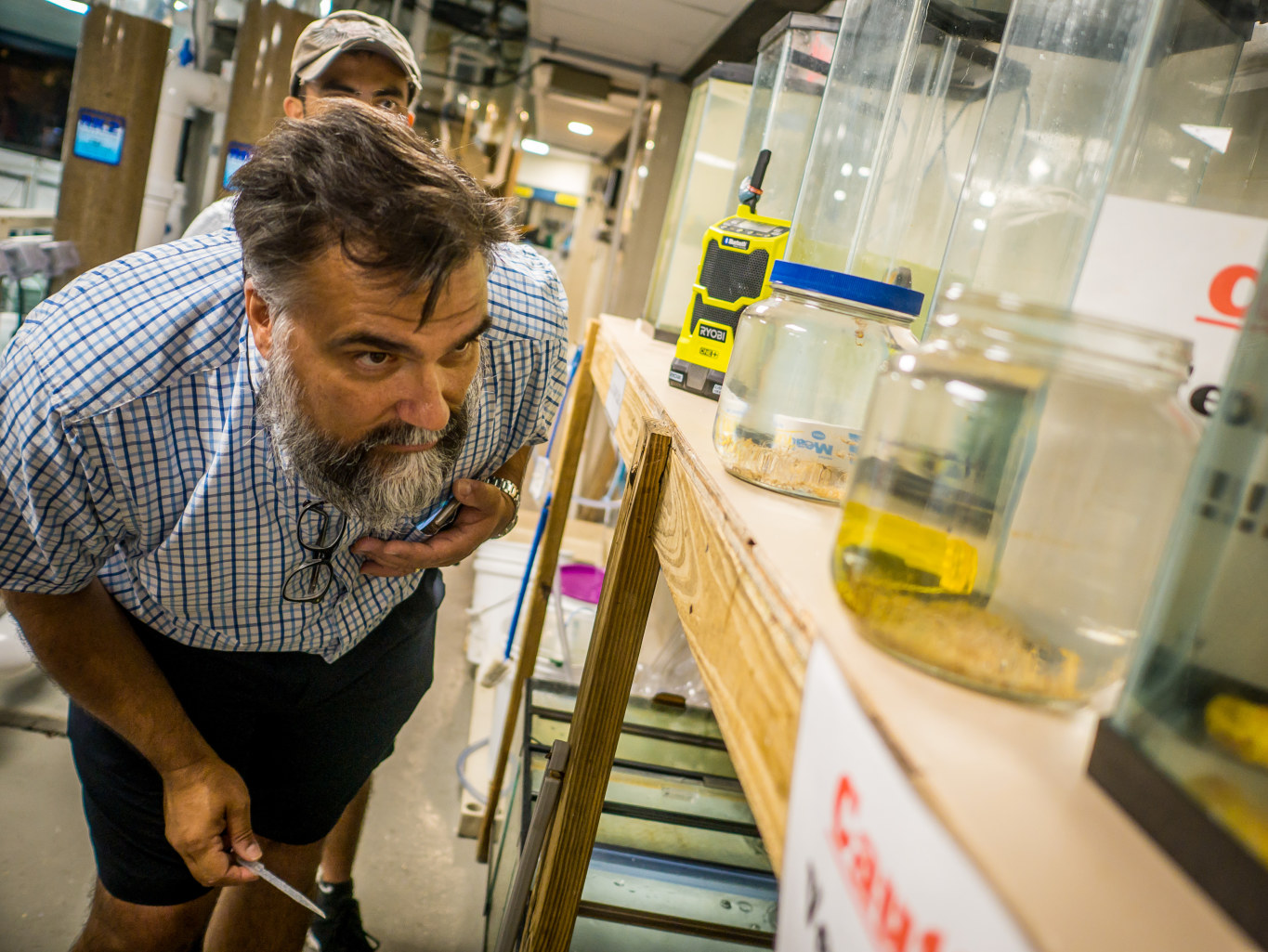
Biology Professor Jack Gaynor is coming at jellyfish from a molecular angle. His student team is sequencing the genomes of the clinging jellyfish to determine how they arrived on the East Coast.
“The DNA analysis has found subtle differences in DNA patterns within the same species, which suggests there were several episodes of invasion, not just one,” he says. They likely arrived via tankers from the West Coast. His lab is also studying the clinging jellyfish’s venom and why it’s so toxic. “Understanding the genes that produce the venom might lead to treatments that could alleviate the pain it inflicts on people,” he says.

In Bologna’s lab, student researchers are studying seagrass, which provides a critical habitat for juvenile crabs and fish. Seagrass also helps prevent erosion during storms, and absorbs and buries carbon, reducing carbon from the atmosphere. “Seagrass is critical to New Jersey because recreational and commercial fisheries are extremely important, as is storm surge and hurricane abatement,” says Bologna. But the state’s seagrass has been decimated. Bologna received a grant to restore seagrass by identifying ideal areas for survival and then transplanting live seagrass into those areas.
Keeping Water Safe for Swimming and Fishing:
Meiyin Wu
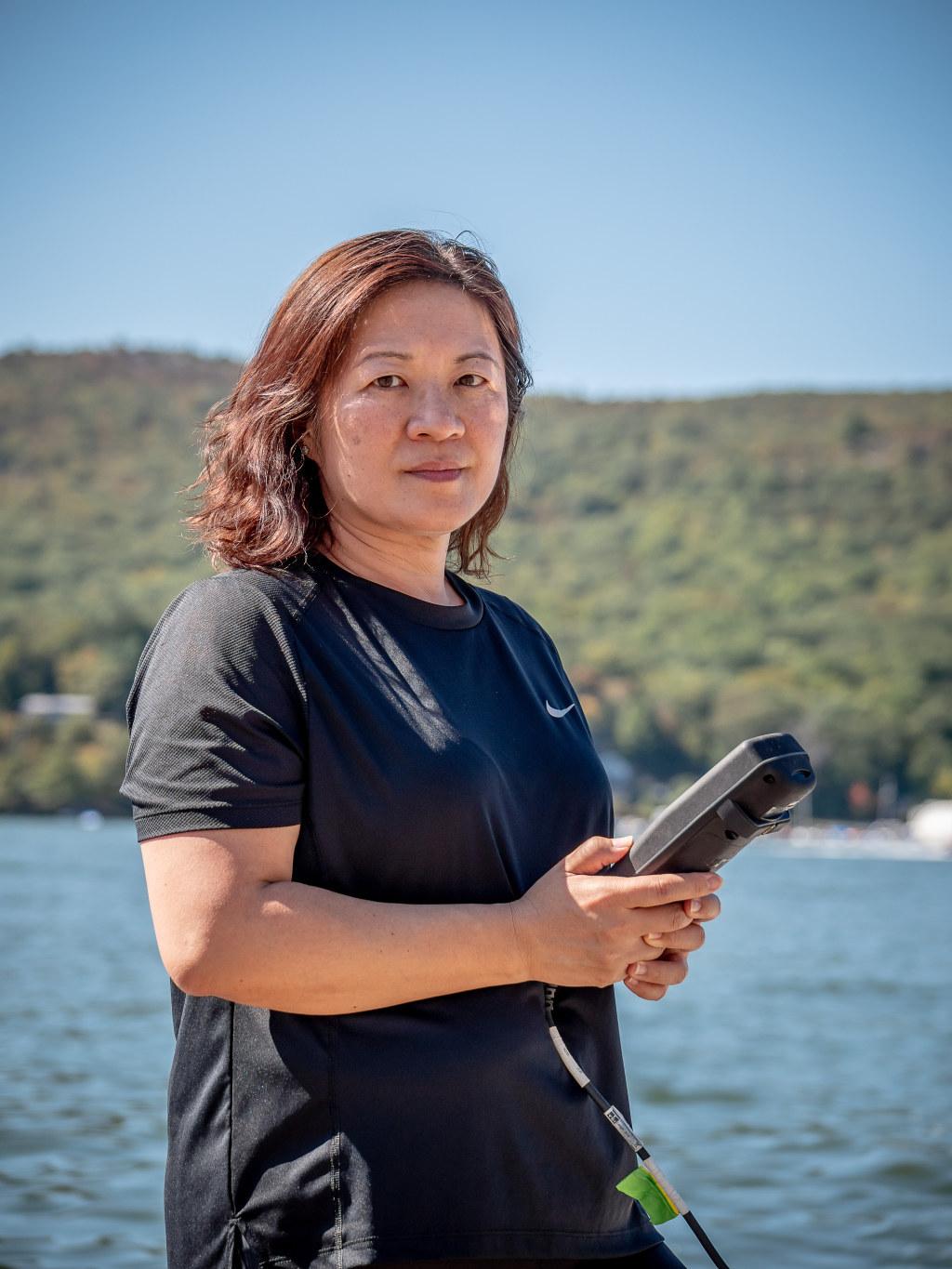
In August, Biology Professor Meiyin Wu, director of the New Jersey Center for Water Science and Technology, presented final results to the Greenwood Lake Environment Commission about levels of nutrients, pathogens, cyanobacteria and toxins in the lake. The news wasn’t good. Wu’s tests confirmed the water still was not safe after the emergence of harmful algal blooms earlier in the summer. The lake would remain closed for swimming and other water-contact sports as well as for use as well water. Working to protect New Jersey’s water system, Wu studies water safety for drinking, swimming and seafood consumption. Her lab works with the New Jersey Department of Environmental Protection to monitor algae growth and the toxins algae produces in drinking and swimming water throughout the state. “It’s a great concern for human health, and can cause diarrhea, fever, allergic skin reactions and possibly neurodegeneration,” says Wu. Her lab also identifies areas unfit for fishing and crabbing.
“In New Jersey, we have quite a few areas with high levels of metals or pollutants; some of which can accumulate in our fish and crabs,” she says. Wu’s lab, which receives federal, state and local grants, also works with county and city governments and nonprofits to reduce pollutants such as leaky septic tanks and farm runoff spilling into the waterways and water bodies.
Predicting the Fate of the Barrier Islands:
Jorge Lorenzo-Trueba
The barrier islands along the New Jersey coastline have been able to keep pace with sea-level rise for thousands of years, but they face an uncertain future over the next century as rates of sea-level rise accelerate. Jorge Lorenzo-Trueba, assistant professor of Earth and Environmental Studies, studies the islands’ long- and short-term evolution to develop “geoeconomic” mathematical models that will help predict how the coastal environment will respond in the future.
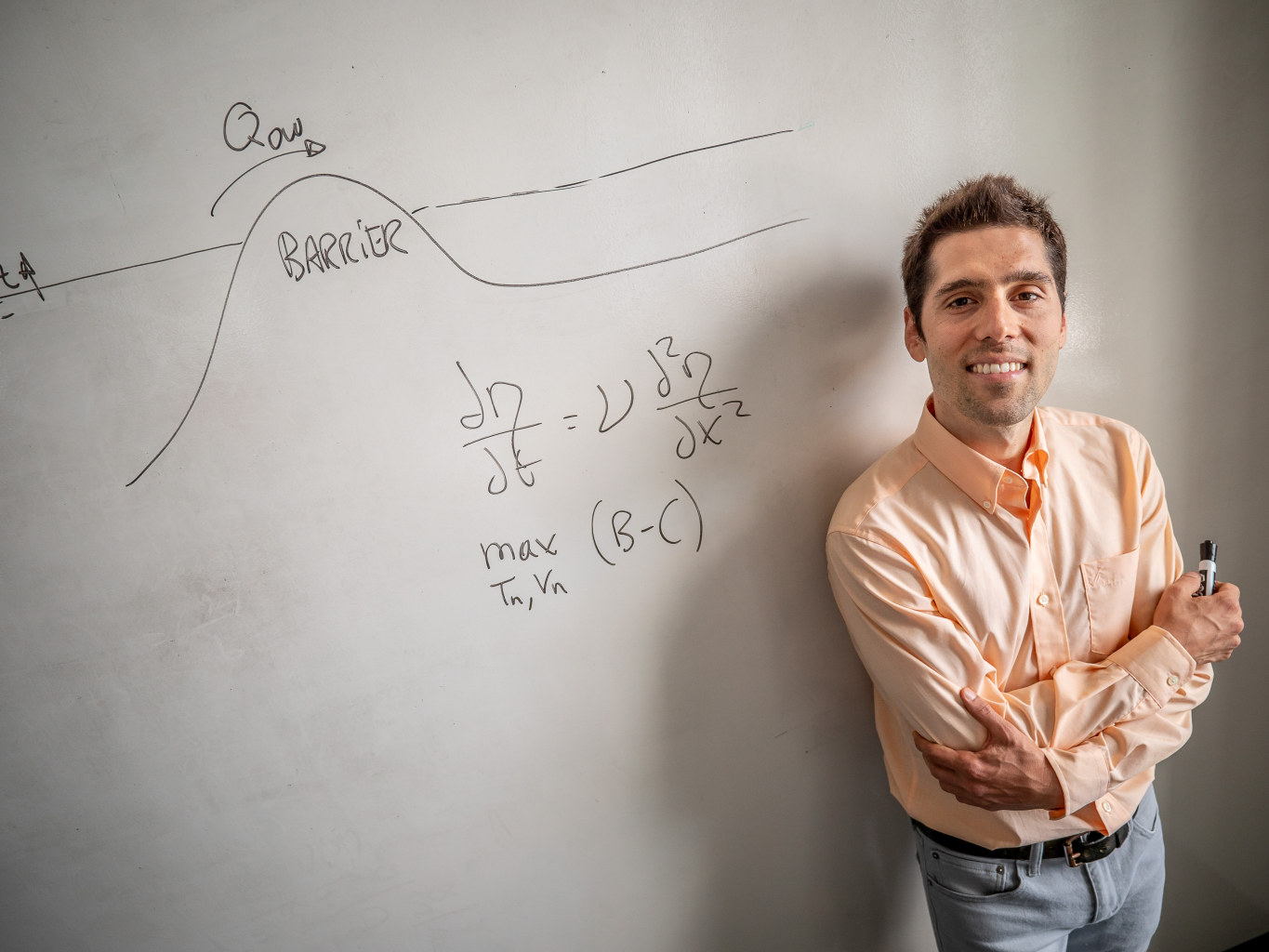
Understanding long-term coastal hazards is particularly relevant to New Jersey, where coastal communities have followed several cycles of rapid development followed by storm-inflicted devastation over the last century. Lorenzo-Trueba’s research, which is a combination of numerical tools and field observations, could lead to restoration and protective measures, such as building dunes in front of beachfront properties.
“These cycles of destruction from hurricanes and redevelopment may not be the most economically feasible way to proceed looking into the future, which is why we need to study this,” he says.
When Land and River Meet: Joshua Galster
In geology, change usually happens over thousands of years. But at the Rockaway River in Boonton, New Jersey, Joshua Galster, associate professor of Earth and Environmental Studies, and his team are witnessing the river eroding the hillside in real time, with each rock the size of a melon that tumbles down. For the owners of the houses perched at the top of the hill, it is an urgent issue. As a geologist who looks at how land use or climate change affect rivers and streams, Galster and his team monitor the damage, pound erosion pins (metal rods) into the hillside, and take daily photos using a camera they installed.
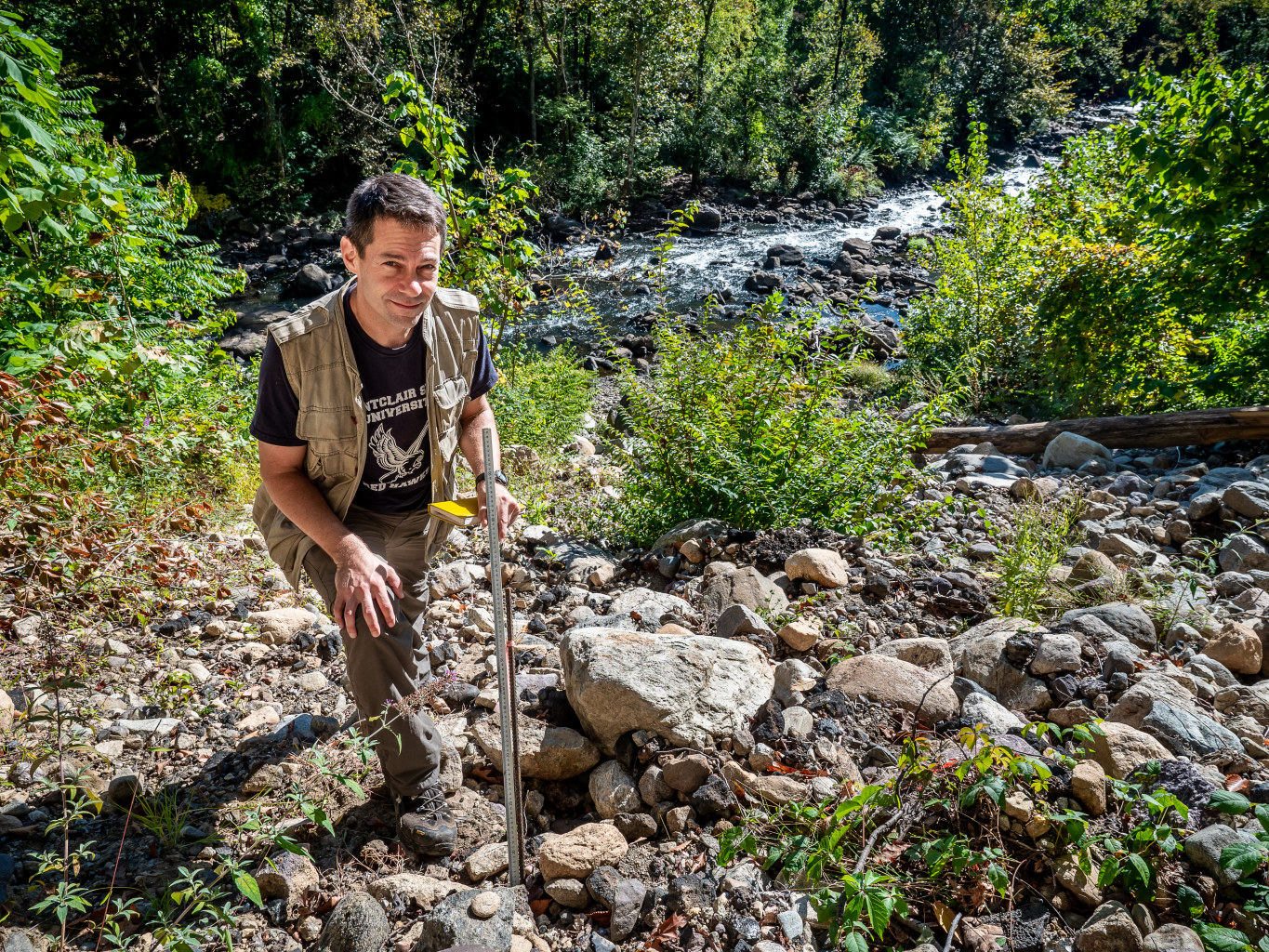
He and his student researchers are also working on a dam removal project. New Jersey has several thousand small dams, most of them obsolete, and removing them can improve water quality and wildlife habitats. But it can be an expensive endeavor. Typically, sediment that builds up behind the dam needs to be dug up and carted away. Galster’s students are looking at what happens downstream if the sediment is not removed but allowed to disperse naturally. Does it flow down all at once and wreak havoc in its path, or slowly loosen and move downstream?
“My students have been monitoring how the channel changes downstream of the dam,” he says. “If we had inexpensive and efficient dam removal, it would allow us to remove more dams for less money.”
Keeping Drinking Water Safe:
Pankaj Lal and Yang Deng
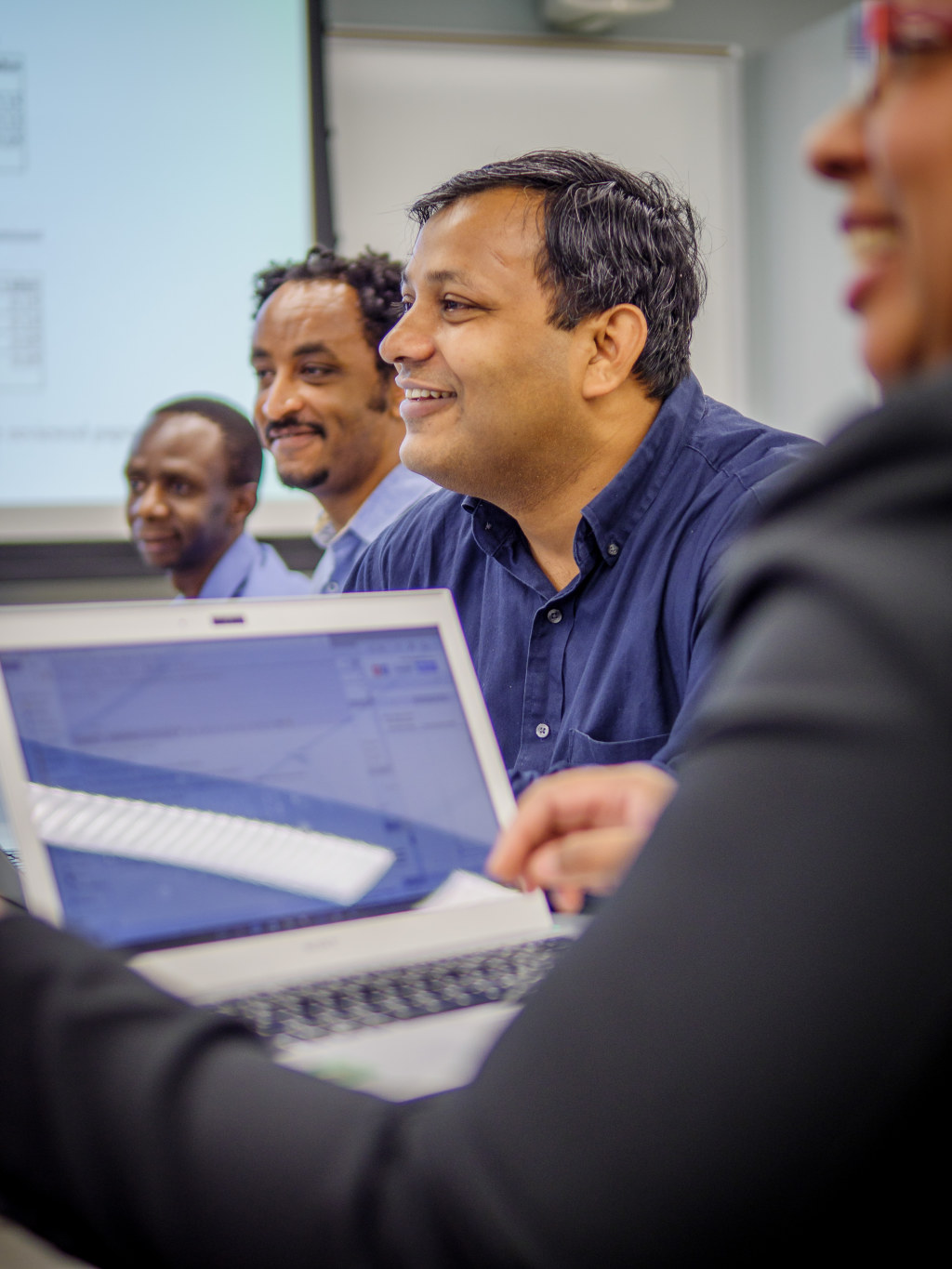
A hard rain can overflow storm sewers and contaminate the water supply, an issue being tackled by Pankaj Lal and Yang Deng, both professors of Earth and Environmental Studies. It’s a particular problem in the bigger towns in Northern New Jersey, like Paterson, Elizabeth, Newark and Orange, which have combined sewer overflows (CSOs), large pipes that collect rainwater and sewage and transport it to a sewage treatment plant. During a heavy rain, these pipes can overflow, making the water unsafe to drink. Lal, who is also the founding director of the Clean Energy and Sustainability Analytics Center, looks specifically at what communities can do to reduce the runoff, such as creating rain barrels and rain gardens, and whether residents are willing to pay for these measures. He, along with the Center’s researchers, are working in three cities to determine their willingness to invest.
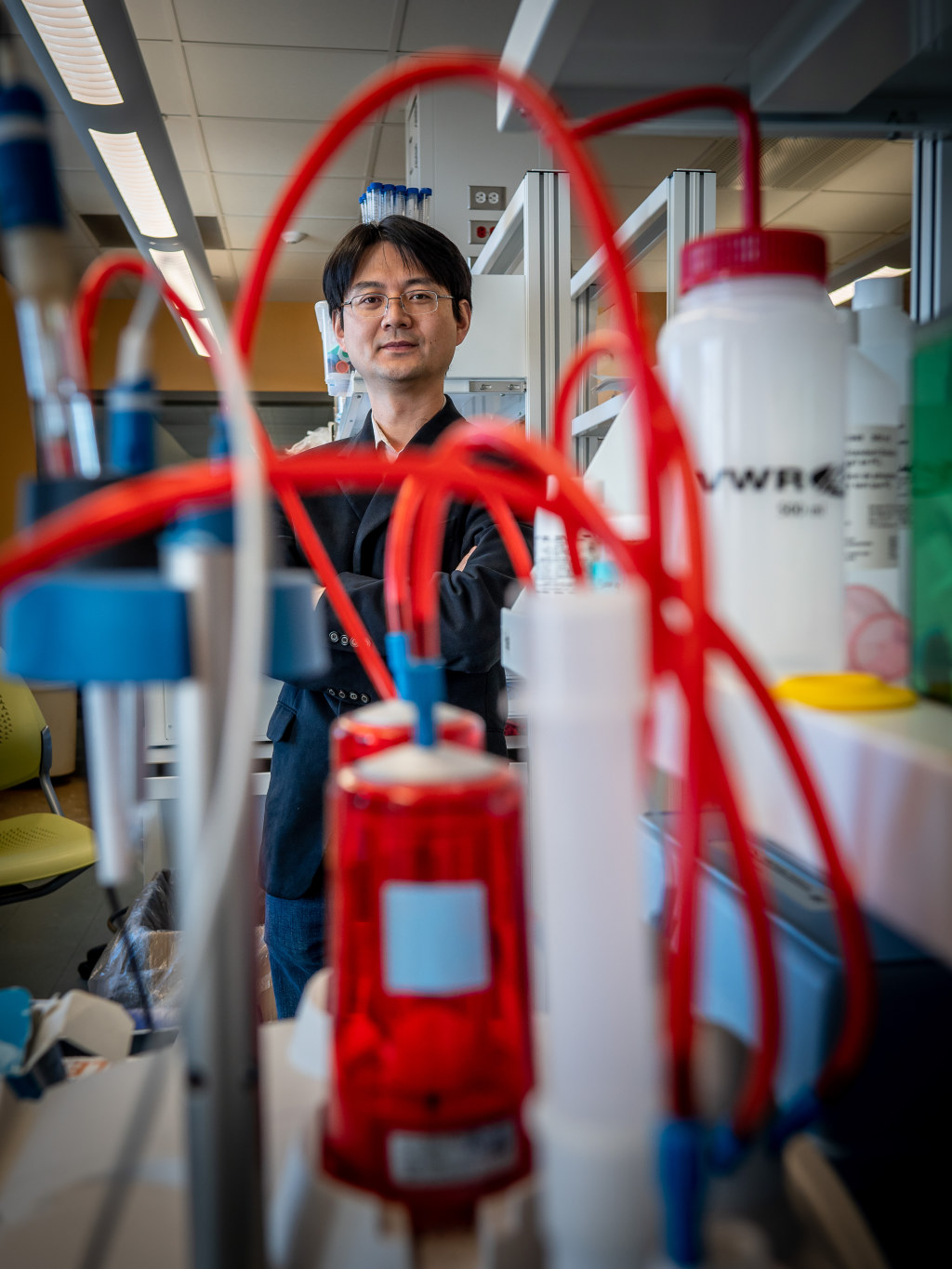
Deng, whose work is supported by the University’s PSEG Institute for Sustainability Studies and New Jersey Water Resources Research Institute, is studying various methods of treating wastewater to make it safe to drink, and whether communities would be willing to drink the treated water.
The work he and his student researchers are doing includes inventing technology to use a chemical compound for emergency water treatment in response to natural disasters, which are increasing in frequency and magnitude globally. “However,” he says, “the invented technology is expected to be applied anywhere for production of safe and clean water.”